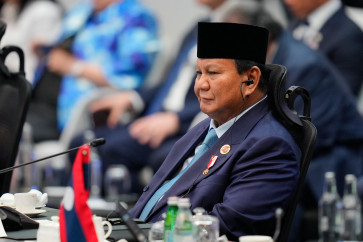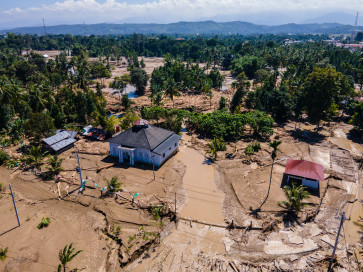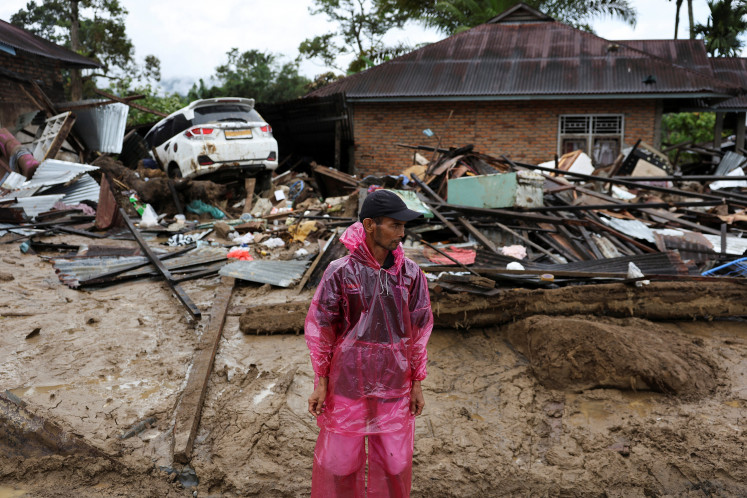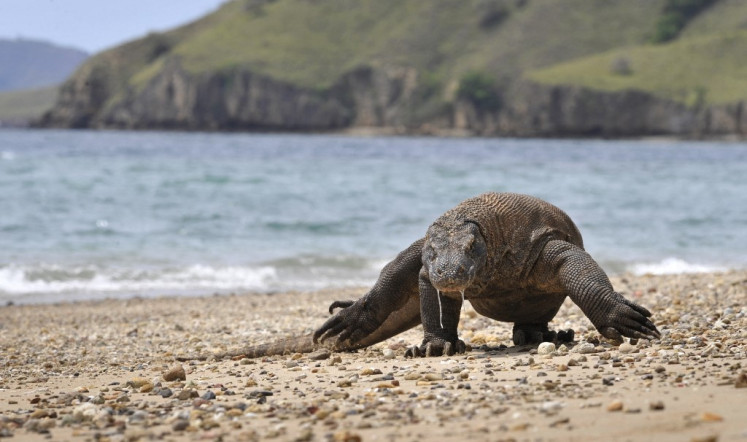Popular Reads
Top Results
Can't find what you're looking for?
View all search resultsPopular Reads
Top Results
Can't find what you're looking for?
View all search resultsWolbachia-carrying mosquitoes: Hope to combat dengue fever
Collaboration involving the Center for Tropical Medicine of Gadjah Mada University’s School of Medicine and Nursing, the Tahija Foundation and Monash University has given the world new hope in combating dengue fever
Change text size
Gift Premium Articles
to Anyone
C
ollaboration involving the Center for Tropical Medicine of Gadjah Mada University’s School of Medicine and Nursing, the Tahija Foundation and Monash University has given the world new hope in combating dengue fever.
Since 2011 researchers have intervened in the environment by releasing Aedes aegypti mosquitoes carrying the Wolbachia bacteria in a residential area and have succeeded in drastically decreasing dengue fever cases in the area.
Wolbachia, which was first identified by United States scientists Marshall Hertig and S. Burt Wolbach in the 1920s and 1930s, is a bacterium that naturally exists in insects but not in Aedes aegypti.
In the 1980s the director of Monash University’s World Mosquito Program (WMP), entomologist Scott O’Neill, conducted research into the possibility of the bacterium stopping mosquitoes from being a vector for dengue fever.
After years of research he found out that Wolbachia in Aedes aegypti could control the replication of the dengue virus.
Together with his team, he bred Aedes aegypti carrying Wolbachia by inserting the bacterium into mosquito eggs. The eggs were taken to Indonesia to be further bred by the WMP in Yogyakarta.
The head of the Yogyakarta WMP research team, Adi Utarini, said the results showed that in areas where mosquitoes carrying Wolbachia were introduced, the number of dengue fever cases was lower than those in control areas.
The research covered 10 subdistricts in Yogyakarta city, where dengue fever cases were monitored from 2006 to 2016. The mosquitoes carrying Wolbachia were introduced into seven subdistricts in the western part of the city. Three other subdistricts in the eastern part functioned as control areas.
“We looked at the impacts from March 2017 to June 2019. It turned out that there was a decrease in dengue fever cases by 76 percent in the areas where mosquitoes carrying Wolbachia were introduced,” Utarini said, declining to reveal the figures in detail.
Data from the city’s health agency, however, showed that from May 2016 the number of dengue fever cases in the areas dropped from 40 to below 20 per 100,000 residents. “It’s beyond expectations and relatively promising,” she said.
The monitoring results also showed no reintroduction was needed because mosquitoes carrying Wolbachia could breed well in nature.
When male mosquitoes carrying Wolbachia mate with non-Wolbachia females, the female mosquitoes will lay eggs but the eggs do not hatch. When both male and female mosquitoes carry Wolbachia, the hatched mosquitoes will also carry Wolbachia. When only the female mosquito carries Wolbachia, the offspring will also do so.
The WMP in Yogyakarta is currently conducting advanced research, a cluster randomized control trial, in which Yogyakarta is divided into 24 clusters, in 12 of which mosquitoes carrying Wolbachia are introduced from March to December 2017 while the other 12 will function as control areas.
The methodology to be used will be tighter whereby the movements of the respondents will be studied to determine where they might have received the mosquito bite that led to them contracting dengue fever.
“The result of this research is expected to be ready by mid-2020. The world is waiting for it because such research is only conducted in Indonesia and it will serve as a reference,” she said.
Separately, Yogyakarta Health Agency disease prevention and control division head Yudiria Amelia said the decrease in the number of dengue fever cases in the seven subdistricts where the original research was conducted was not simply because of the mosquito carrying Wolbachia.
She said that apart from the fact that during the dry season dengue fever cases were usually lower, her office also continued conducting mosquito-eradication programs. “For example, we still implement the ‘one house one wiggler observer’ program.”
Mosquitoes carrying Wolbachia were first bred in Yogyakarta in 2011 at the WMP’s entomology laboratory to match the characteristics of the city.
Hundreds of the mosquitoes, male and female, were placed in boxes. Once a week a healthy official conducted blood feeding, allowing female mosquitoes to suck blood from his hands. Blood feeding is normally conducted for 15 minutes.
For male mosquitoes sugar water was provided because in nature the male insect only feeds on nectar from plants.
Once a week some 20,000 mosquito eggs were harvested from each of the breeding boxes. They were then put in special containers to be placed in residential areas to grow into mosquitoes with Wolbachia.
Bambang Hariyanto of Kricak subdistrict, Yogyakarta, said that since mosquitoes carrying Wolbachia were introduced in 2017 he no longer heard of any dengue fever cases in his neighborhood.
“I believe mosquitoes carrying Wolbachia can reduce dengue fever cases,” he said.










